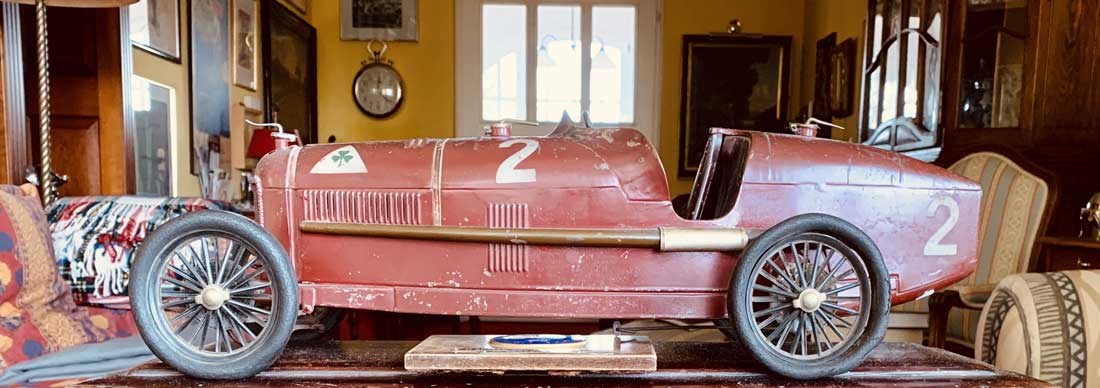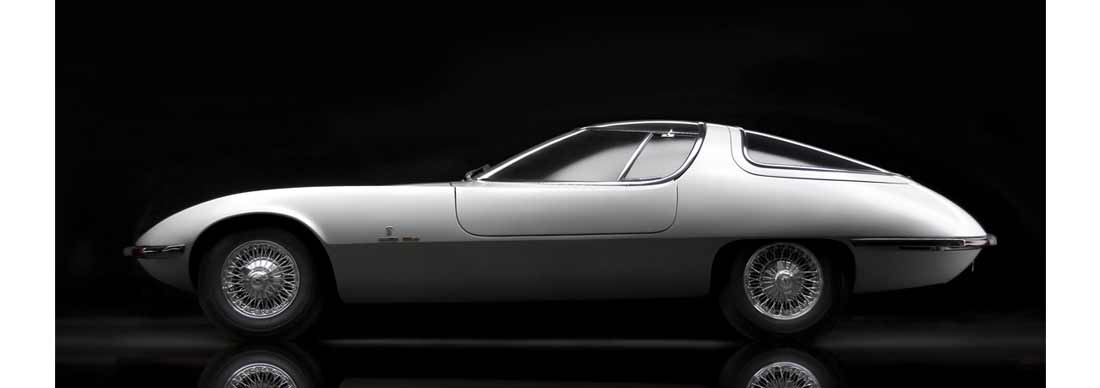
Ghia Shelby Cobra GT
It is a car that appeared out of nowhere and vanished from sight almost as quickly. Who, precisely, commissioned the construction of this one-off Shelby Cobra remains open to conjecture, as does the identity of the man who shaped it. As to what happened to the car following its one and only public appearance at the 1965 Turin Motor Show, your guess is as good as ours. The Internet is agoggle with theories. And if you cannot trust the Internet, then who can you trust?
The Cobra famously formed a cornerstone of Ford’s Total Performance programme: the one initiated after Enzo Ferrari famously rebuffed the advances of Henry Ford II at the 11th hour. The Blue Oval was all set to acquire the Ferrari marque only for Il Commendatore to get cold feet.
Former Le Mans winner Carroll Shelby, motor sport’s answer to P.T. Barnum, initiated the Ford-backed, AC Ace-based Cobra which, for all its on-track success, never was a big seller. What’s more, there was a certain ‘not invented here’ enmity on Ford’s part, which is where this car purportedly came in. There had been prior internal attempts at clothing the Cobra chassis with contemporary styling, but this was something else entirely.

At some point in 1965, a Cobra 427 complete with big-block V8 engine, was dispatched to Carrozzeria Ghia, the story being that the entrepreneurial Alessandro de Tomaso sniffed an opportunity to build a second-generation Cobra in series. Several books state that the Ghia principal hoped to impress Shelby and the suits at Ford. The thing is, de Tomaso didn’t assume control of Ghia until 1967. However, that wouldn’t necessarily stop him using the once-revered coachbuilder as a subcontractor.
Save for the fat Halibrand wheels with their huge three-eared spinners, and equally stout Goodyear tyres, there were no obvious signifiers that the car was Cobra-based. The prototype’s outline was attractive, if a little stumpy due to the donor car’s short wheelbase. Style Auto magazine ran an exclusive feature on the car in period, and referred to it as the Cobra GT.
It reported, not altogether coherently: “The sides sport a hint of dihedron below which, between the front wheel and door, there is a slit for engine compartment air exit. The door handle is replaced by a recessed push button, thus the complete side surface results perfectly smooth. The moderately wrap around windscreen could perhaps do with more rake. Very successful, too, is the tail in typical Ghia style, lightened by the bumper which cuts it exactly in the middle, dividing the large round tail lights according to their function.” Quite.
Resplendent in dark blue with orange/brown leather upholstery, the all-new dashboard appeared to be something of an afterthought. Giorgetto Giugiaro had been credited with styling the car, but Il Maestro denied this when asked by the author. There is also the question of a second car which was purportedly made, an assumption based entirely on photos showing a car with round rather than rectangular headlights behind Perspex lenses.
Following the big reveal in Turin, all went quiet. There was no clamour for adoption by Shelby or Ford and the show car disappeared into the ether. Where is it now?
Other articles by Richard Heseltine
Books by Richard






Leave a comment
This site is protected by hCaptcha and the hCaptcha Privacy Policy and Terms of Service apply.